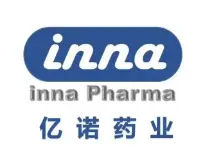预约演示
更新于:2025-05-07
MYD88
更新于:2025-05-07
基本信息
别名 MYD88、MYD88 innate immune signal transduction adaptor、Myeloid differentiation primary response protein MyD88 |
简介 Adapter protein involved in the Toll-like receptor and IL-1 receptor signaling pathway in the innate immune response (PubMed:15361868, PubMed:18292575, PubMed:33718825, PubMed:37971847). Acts via IRAK1, IRAK2, IRF7 and TRAF6, leading to NF-kappa-B activation, cytokine secretion and the inflammatory response (PubMed:15361868, PubMed:19506249, PubMed:24316379). Increases IL-8 transcription (PubMed:9013863). Involved in IL-18-mediated signaling pathway. Activates IRF1 resulting in its rapid migration into the nucleus to mediate an efficient induction of IFN-beta, NOS2/INOS, and IL12A genes. Upon TLR8 activation by GU-rich single-stranded RNA (GU-rich RNA) derived from viruses such as SARS-CoV-2, SARS-CoV and HIV-1, induces IL1B release through NLRP3 inflammasome activation (PubMed:33718825). MyD88-mediated signaling in intestinal epithelial cells is crucial for maintenance of gut homeostasis and controls the expression of the antimicrobial lectin REG3G in the small intestine (By similarity). |
关联
19
项与 MYD88 相关的药物靶点 |
作用机制 MYD88抑制剂 |
在研机构 |
原研机构 |
在研适应症 |
非在研适应症- |
最高研发阶段临床1期 |
首次获批国家/地区- |
首次获批日期1800-01-20 |
靶点 |
作用机制 MYD88抑制剂 |
在研适应症 |
非在研适应症- |
最高研发阶段临床前 |
首次获批国家/地区- |
首次获批日期1800-01-20 |
靶点 |
作用机制 MYD88抑制剂 |
在研适应症 |
非在研适应症- |
最高研发阶段临床前 |
首次获批国家/地区- |
首次获批日期1800-01-20 |
1
项与 MYD88 相关的临床试验CTR20244849
一项用于评估INNA1605软膏在健康成人受试者中的安全性、耐受性和药代动力学特征的首次人体、随机、双盲、安慰剂对照、成组序贯设计的Ⅰ期研究
主要目的:考察健康成人受试者单、多次涂抹INNA1605软膏的安全性和耐受性(局部和系统)。次要目的:探索健康成人受试者单、多次涂抹INNA1605软膏后的系统药代动力学(Pharmacokinetics,PK)特征。
开始日期- |
申办/合作机构 |
100 项与 MYD88 相关的临床结果
登录后查看更多信息
100 项与 MYD88 相关的转化医学
登录后查看更多信息
0 项与 MYD88 相关的专利(医药)
登录后查看更多信息
11,058
项与 MYD88 相关的文献(医药)2025-12-31·Gut Microbes
The regulatory effect of chitooligosaccharides on islet inflammation in T2D individuals after islet cell transplantation: the mechanism behind
Candida albicans
abundance and macrophage polarization
Article
作者: Ji, Xiaoguo ; Yin, Hao ; Zhao, Liming ; Chang, Kunlin ; Zhao, Mengyao ; Zhang, Yayu
2025-12-31·Renal Failure
Xuebijing injection alleviates septic acute kidney injury by modulating inflammation, mitochondrial dysfunction, and endoplasmic reticulum stress
Article
作者: Zhang, Lei ; Jiang, Guiya ; Gao, Yue ; Mao, Weipu ; Chen, Shuqiu ; Zhang, Guangyuan ; Lu, Xun ; Chen, Ming ; Sun, Si ; Tao, Shuchun ; Zhang, Nieke
2025-12-01·Inflammation Research
Luteolin modulates liver macrophage subtype polarization and play protective role in sepsis induced acute hepatic injury
Article
作者: Deng, Liangyong ; Kuang, Gang ; Ye, Lin ; Yu, Qiulei ; Fan, Jing ; Wang, Liuyang
192
项与 MYD88 相关的新闻(医药)2025-05-04
摘要:大多数疫苗传统上通过肌肉注射给药,但皮肤因含有大量抗原呈递细胞,正逐渐成为更具免疫原性的疫苗接种部位。皮内接种可提高流感疫苗的效力,并在猴痘疫苗短缺时节省剂量 。然而,皮内接种比肌肉注射更容易引发局部反应,因此需要安全有效的佐剂来增强皮内接种效果 。本文将介绍目前已批准用于人类疫苗的佐剂及其皮内接种的反应原性,探讨正在研发的化学和物理佐剂,分析物理佐剂的研发原理、类型及优势,旨在为皮内接种疫苗的佐剂选择提供参考。一、皮肤结构皮肤是人体最大的器官,具有防止热量和水分流失、抵御病原体感染等重要生理功能 。它主要分为三层:角质层、表皮和真皮(插入原文 Fig. 1,展示皮肤结构和驻留的先天免疫细胞的示意图,帮助读者直观理解皮肤的结构组成)。角质层位于皮肤最外层,由角质细胞组成,具有很强的疏水性,是皮肤的主要屏障 。表皮层在角质层下方,主要由角质形成细胞构成,其中还散布着朗格汉斯细胞,这些细胞能作为免疫哨兵发挥作用 。真皮层则包含汗腺、毛囊、血管、淋巴管和神经纤维等多种结构,还有成纤维细胞和树突状细胞、巨噬细胞等先天免疫细胞 。此外,皮肤中还存在大量的 T 淋巴细胞,其中大部分是皮肤驻留记忆 T 细胞。这些驻留的先天免疫细胞不仅是抵御病原体感染的第一道防线,还能诱导针对病原体或疫苗的适应性免疫反应。二、皮内接种疫苗的优势过去,大多数疫苗选择肌肉注射,主要是因为操作方便,无需太多专业培训 。但近二三十年来的大量研究发现,将疫苗接种途径从肌肉注射改为皮内注射,能诱导更强的免疫反应 。这主要是因为皮肤中富含抗原呈递细胞,如表皮的朗格汉斯细胞和真皮的树突状细胞,而肌肉中这类细胞相对较少 。皮内疫苗的抗原会被抗原呈递细胞摄取,并呈现在主要组织相容性复合体(MHC) I 或 II 类分子上,随后这些细胞迁移到引流淋巴结,引发抗原特异性的 T 细胞和 B 细胞反应 。同时,皮内疫苗还能激活局部先天免疫细胞,分泌细胞因子和趋化因子,招募循环中的先天免疫细胞 。多项研究表明,皮内接种流感疫苗比肌肉或皮下接种在老年人中更具免疫原性,低剂量的皮内流感疫苗就能在年轻人中引发与全剂量肌肉注射相当的免疫反应 。此外,皮内接种对狂犬病疫苗、乙肝疫苗等也能增强免疫反应 。在猴痘疫情爆发期间,由于疫苗短缺,美国食品药品监督管理局(FDA)批准皮内注射猴痘疫苗,以扩大疫苗的使用范围,保护更多高危人群。三、皮内接种疫苗的局限性尽管皮内接种能提高疫苗的免疫原性,但提升程度相对有限 。例如,皮内接种流感疫苗仅能节省 40 - 60% 的剂量,在老年人中,其对不同流感毒株的血清转化率提升幅度也较小 。而且,皮内接种疫苗面临诱导显著局部反应的风险 。研究发现,无佐剂的皮内疫苗比肌肉注射疫苗更容易引发频繁且严重的局部不良反应 。这是因为皮肤中存在多种先天免疫细胞,它们在促进抗原摄取和增强适应性免疫的同时,也会通过合成和释放细胞因子、趋化因子,招募外周的中性粒细胞、单核细胞和嗜酸性粒细胞,从而导致局部不良反应 。因此,用于皮内接种的佐剂需要比肌肉注射用佐剂具有更好的局部安全性。本文主要聚焦于介绍用于增强针对传染病的皮内接种疫苗的佐剂,且重点关注增强皮内蛋白和亚单位疫苗诱导的免疫反应的佐剂,不涉及疫苗 / 佐剂配方(如聚合物纳米颗粒、脂质体)的相关内容 。四、已批准佐剂及其皮内反应原性疫苗佐剂在 21 世纪受到越来越多的关注,因为它们在新型和改进型疫苗的开发中起着关键作用 。美国国家过敏和传染病研究所(NIAID)在 2008 年启动了 “佐剂开发计划”,支持新型佐剂的筛选、鉴定和临床前 / 临床开发 。在过去的二十年里,有五种佐剂被批准用于人类疫苗,而在此之前的八十年里仅有两种 。但这些佐剂均是被批准用于肌肉注射,其皮内注射的局部不良反应风险可根据肌肉注射的局部反应原性进行预测(原文 Table 1,展示目前已批准的佐剂及其皮内反应原性的相关信息,包括佐剂名称、描述、批准年份、适用疫苗、Th1/Th2 偏向、粒径和皮内反应原性等级,直观呈现各类佐剂的特点和潜在风险)。铝佐剂:是全球使用最广泛的佐剂,主要基于氢氧化铝或磷酸铝,能增强 Th2 偏向的抗体反应,但诱导细胞介导免疫反应的能力较弱 。肌肉注射铝佐剂会导致显著的组织应激和细胞死亡,引发细胞因子 / 趋化因子释放,招募大量免疫细胞 。皮内注射实验性铝佐剂 Imject 也会导致小鼠皮肤炎症细胞高密度浸润,且持续至少四天。因此,铝佐剂皮内注射有较高风险引发显著局部反应 。AS04 佐剂:是由 MPL 吸附在氢氧化铝佐剂上制成的组合佐剂 。MPL 作为 TLR4 激动剂,能激活相关信号通路,诱导促炎细胞因子基因表达 。AS04 被批准用于增强人乳头瘤病毒疫苗的效力,但研究发现,与无佐剂疫苗相比,AS04 佐剂疫苗会引发更频繁的局部反应,如疼痛、红肿和肿胀 。我们之前的研究也发现,皮内注射 MPL/Alum 佐剂会导致皮肤真皮组织出现红斑、肿胀和大量炎症细胞浸润 。这表明 AS04 佐剂皮内注射有较高风险引发显著局部反应 。AS01 佐剂:是一种脂质体制剂,包含 MPL 和从皂树皮中纯化的皂苷成分 QS21 ,被批准用于增强疟疾 RTS,S 疫苗的效力,能诱导 Th1 为主的免疫反应 。AS01 在肌肉注射后会迅速从注射部位清除,诱导细胞因子短暂表达,并快速招募免疫细胞 。考虑到其成分 MPL 的作用,以及 MPL 和 QS21 的协同效应和对局部炎症的强烈诱导,AS01 佐剂皮内注射后有较高风险引发显著局部反应 。MF59 和 AS03 佐剂:都是基于角鲨烯的水包油纳米乳液佐剂,分别由诺华和葛兰素史克开发 。MF59 用于增强季节性流感疫苗和大流行前 H5N1 疫苗的效力,AS03 则用于增强 2009 年 H1N1 流感大流行疫苗和大流行前 H5N1 疫苗的效力 。这两种佐剂主要诱导 Th2 偏向的免疫反应,且弱诱导 Th1 反应 。肌肉注射 MF59 会导致组织应激和细胞死亡,更强烈地招募免疫细胞,皮内注射类似 MF59 的 AddaVax 佐剂也会引发大量免疫细胞招募和细胞因子、趋化因子的长时间表达 。肌肉注射 AS03 会诱导持续的细胞因子表达,引发内质网应激 。这些都表明 MF59 和 AS03 佐剂皮内注射可能引发显著局部反应 。Matrix-M 佐剂:由两种源自皂苷提取物的 40 纳米颗粒配方组成,已被用于新冠疫苗(NVX-CoV2373) 。Matrix-M 佐剂能诱导 Th1 偏向的免疫反应,但接种该佐剂的新冠疫苗后,局部不良反应的发生率高于安慰剂组 。在猪模型中,肌肉注射 Matrix-M 佐剂会引发急性炎症、出血和坏死 。虽然目前尚无研究探讨其皮内接种的效力和安全性,但相关研究提示其有较高风险引发显著局部反应 。CpG 1018:是一种含未甲基化 CpG 基序的寡核苷酸,能激活 TLR9 和 MyD88 信号通路,刺激 Th1 偏向的抗体反应和细胞介导的免疫反应,已被用于乙肝疫苗 。研究发现,皮内注射小鼠特异性 CpG 会诱导轻微的局部反应和低水平的免疫细胞招募,因此预计 CpG 1018 皮内反应原性较低,有望安全地增强皮内接种效果 。总体而言,大多数已批准的佐剂皮内注射有较高风险引发显著局部反应,而具有高皮内反应原性的化学佐剂大多是颗粒状的,它们会强烈激活局部先天免疫系统 。不过,CpG 1018 可能是个例外,它诱导的炎症较轻,不会引发明显的局部反应。五、其他用于安全皮内接种的化学佐剂鉴于已批准佐剂的高局部反应原性,研究人员探索了其他化学佐剂用于安全皮内接种的可能性,部分佐剂已进入临床试验阶段(原文 Fig. 3,展示用于皮内接种的安全佐剂的化学结构,包括 CpG 1018、GLA-AF、咪喹莫特、Poly (I:C)、cGAMP 和 PCPP 聚合物,帮助读者了解这些佐剂的化学特性)。GLA-AF 佐剂:一些已批准的佐剂(如 AS01 和 AS04)含有 MPL 来增强疫苗效果 。虽然 MPL 未被批准作为单一佐剂,但研究发现皮内注射 MPL 在小鼠模型中仅诱导轻度炎症,无明显局部不良反应 。Carter 等人评估了合成的 TLR4 激动剂 GLA - 水基配方(GLA-AF)对雪貂和人类皮内 H5N1 疫苗接种的增强作用,发现 GLA-AF 对雪貂的单剂量疫苗保护和人类的血清保护至关重要,且在豚鼠和人体临床研究中未引起明显不良反应,这表明 GLA-AF 及其他 TLR4 激动剂在皮内接种方面具有潜力 。局部咪喹莫特佐剂:外用咪喹莫特乳膏(5% Aldara)已被 FDA 批准用于治疗多种疾病,它是 TLR7 激动剂,能激活相关信号通路,诱导促炎细胞因子和 I 型干扰素基因表达 。在一项双盲、随机、对照临床试验中,皮内注射流感疫苗前外用咪喹莫特乳膏,可提高针对疫苗病毒株和非疫苗病毒株的血清转化率 。在炎症性肠病患者中,皮内注射乙肝疫苗前使用外用咪喹莫特乳膏,其血清保护率显著高于肌肉注射组 。虽然外用咪喹莫特组局部不良反应更频繁,但总体安全性良好,表明其可显著提高皮内疫苗效力 。Poly (I:C) 佐剂:Poly (I:C) 是双链 RNA 的合成类似物,根据其所在位置可激活不同的信号通路 。在皮内或透皮疫苗接种中,它被用于诱导针对多种传染病的有效免疫反应 。不同研究中,Poly (I:C) 佐剂的效果有所差异,较低剂量(1µg)时可能效果不明显,而 25µg 的 Poly (I:C) 可显著增强皮内 HIV-1 gp140 或 HSV-2 gD 糖蛋白诱导的全身和黏膜抗体反应 。近期,一项 1 期临床试验测试了与光化学内化技术联合使用的 Poly (I:C),初步表明该方法安全性良好,这显示了 Poly (I:C) 作为皮内接种佐剂的安全性 。cGAMP 佐剂:2′3′ - 环鸟苷酸 - 腺苷酸(cGAMP)可激活细胞内干扰素基因刺激蛋白(STING)通路,诱导促炎细胞因子和 I 型干扰素基因表达 。在小鼠和猪模型中,皮内注射 cGAMP 与流感 H5N1 或 2009 年大流行 H1N1 疫苗联合使用,可显著增强疫苗诱导的免疫反应,且未引发明显局部不良反应 。研究还发现,cGAMP 在增强皮内 H5N1 免疫方面比 CpG 或 MPL 更有效,这表明 cGAMP 等 STING 激动剂可作为安全的皮内接种佐剂 。PCPP 佐剂:微针是一种有吸引力的皮内疫苗递送技术 。Andrianov 等人发现聚 [二(羧基苯氧基)磷腈](PCPP)可作为安全的佐剂,用于增强猪的微针介导的皮内乙肝疫苗接种效果 。在该研究中,仅观察到轻微的皮肤发红,无严重不良反应 。此外,一种新的聚磷腈聚合物(PCEP)也被发现可安全地增强仔猪皮内流感 H1N1 疫苗接种的免疫反应 。这些研究表明某些 PRR 激动剂作为皮内佐剂是安全的,且化学性质为水溶性或水基配方的佐剂,通常具有较低的皮内反应原性 。六、用于安全皮内接种的物理佐剂除了化学佐剂,在皮内疫苗接种前对皮肤表面进行短暂的物理能量处理,也被探索用于增强皮内接种效果。研发原理:过去,佐剂的开发很大程度上依赖经验或试错法,尤其是对于非病原体相关分子模式(PAMP)的佐剂,如铝佐剂、MF59 和 QS21 等 。这些佐剂没有特定的细胞受体来介导其佐剂作用,而是通过刺激组织应激和细胞死亡,释放内源性危险信号或损伤相关分子模式(DAMPs)来发挥作用 。“危险理论” 认为,免疫系统会被应激或受损细胞释放的危险信号激活,这解释了在没有外来病原体入侵时,如移植排斥、某些化疗诱导的抗肿瘤免疫激活等情况下,适应性免疫的诱导机制 。近年来发现的多种 DAMPs,如尿酸、ATP、双链 DNA 等,在生理条件下不会被免疫系统识别,但在组织应激或细胞死亡时会释放出来,激活免疫系统 。例如,铝佐剂可刺激尿酸释放,激活 NLRP3 炎性小体和 Caspase 1,部分介导其促炎反应;MF59 佐剂能刺激 ATP 释放,增强免疫反应 。这些发现提示,可控的组织应激或细胞死亡可能诱导内源性危险信号释放,从而增强疫苗接种效果,为物理佐剂的开发提供了理论依据。物理佐剂类型:目前研究最多的用于疫苗佐剂的物理能量是激光和射频,其类型多样(原文 Fig. 4,展示不同类型的激光佐剂(全表面、非剥脱性分数、剥脱性分数)和射频佐剂的简要示意图,帮助读者直观理解不同物理佐剂的作用方式)。激光佐剂:激光发射的窄波长光可被特定组织发色团吸收,在美容和医学领域有广泛应用 。多种激光被探索用于增强皮内接种效果,如铜蒸气激光可通过诱导持续局部炎症增强疫苗免疫反应;非侵入性 Q - 开关 Nd:YAG 532nm 激光治疗可显著增强模型抗原和流感疫苗诱导的免疫反应,且不引起可见或组织学皮肤损伤,其作用机制可能是增强了 MHC II + 细胞的迁移 。近红外激光(NIR)在 1064nm 波长下,可诱导特定趋化因子表达,增加皮肤中 DC 浓度,促进 DC 迁移至引流淋巴结,增强疫苗免疫反应,且在人体试验中显示出良好的安全性 。非剥脱性分数激光(NAFL)通过发射高能微激光束在皮肤表面形成微热区,招募浆细胞样 DCs,与外用咪喹莫特联合使用,可显著增强皮内流感疫苗和疱疹肽疫苗的免疫反应 。此外,基于剥脱性分数激光(AFL)的粉末递送系统(LPD)可实现无针透皮疫苗递送和佐剂作用,AFL 治疗虽会诱导细胞因子和趋化因子释放及免疫细胞招募,但皮肤能在数天内完全恢复,且具有良好的免疫增强效果 。射频佐剂:射频(RF)是一种交变电磁波,在中高频(0.3 - 10MHz)时可产生组织加热,在肿瘤治疗和皮肤重塑等方面有应用 。研究发现,在皮内疫苗接种前进行双极 RF 处理,可诱导短暂、低水平的局部炎症,显著增强抗原摄取、DC 迁移和成熟,增强 OVA 和流感疫苗诱导的免疫反应,且在低剂量疫苗时表现出良好的剂量节省效果 。RF 还能增强重组核蛋白(NP)和基质蛋白 1(M1)为基础的通用 T 细胞疫苗诱导的 CD8 + T 细胞反应,对异源病毒产生交叉保护免疫 。比较组织蛋白质组学研究表明,RF 诱导的局部组织蛋白质组变化最小,这与其诱导的短暂、低水平局部炎症相符 。物理佐剂的优势:物理佐剂在皮内疫苗接种前,通过在皮肤表面短暂应用物理能量来增强免疫反应(原文 Fig. 5,展示化学佐剂和物理佐剂在皮内接种中的不同作用机制,清晰呈现二者的差异,帮助读者理解物理佐剂的独特优势)。与化学佐剂相比,物理佐剂主要由医疗设备递送,可在室温下保存,无需冷链储存;使用的设备可重复使用,且每次使用成本相对较低 。物理佐剂无需与疫苗混合,不会改变或影响疫苗的制造和给药过程 。其作用主要局限于治疗部位,不太可能诱导显著的全身或长期副作用,而化学佐剂可能会迁移至引流淋巴结甚至全身循环,广泛激活免疫系统 。物理佐剂诱导的组织应激可控,能使皮肤快速恢复,通常诱导短暂、低水平的局部炎症,而化学佐剂往往会引发持续且更强烈的局部炎症 。物理佐剂主要通过改变局部环境,增加 DC 的运动性、诱导内源性危险信号释放以增强抗原摄取和 DC 成熟,或促进 DC 迁移到引流淋巴结,从而增强疫苗诱导的免疫反应。在适当开发的情况下,物理佐剂的效果可以与化学佐剂相媲美。七、专家评论皮肤作为疫苗接种部位,具有高度免疫原性,皮内疫苗接种通常能诱导比肌肉注射更强的免疫反应,在提高疫苗效力和节省疫苗剂量方面具有很大潜力。事实上,已有多种疫苗获批用于皮内注射,如流感疫苗、狂犬病疫苗和猴痘疫苗等。然而,皮内接种存在诱导显著局部反应的风险,目前大多数已批准的佐剂因高局部反应原性不适合皮内注射,因此迫切需要开发新型佐剂以安全地增强皮内接种效果,同时避免明显的皮肤反应。近期研究发现了几种有潜力安全增强皮内接种的化学佐剂,包括 CpG 1018、GLA-AF、局部咪喹莫特、Poly (I:C)、cGAMP 和 PCPP 等。其中,CpG 1018 已被批准用于增强肌肉注射乙肝疫苗的效果,GLA-AF 和局部咪喹莫特已在临床试验中用于增强皮内流感疫苗的效果,这些佐剂因其在人体中已建立的安全性,可进一步测试其对皮内接种的增强作用。Poly (I:C) 在肿瘤内、肌肉或皮下注射的临床试验中已显示出良好的耐受性,也可考虑用于评估其对皮内接种的增强效果 。皮内接种佐剂的好处包括进一步提高疫苗效力、节省更多疫苗剂量以及可能诱导交叉保护性免疫 。流感疫苗是测试皮内接种佐剂的理想选择,可解决疫苗不匹配问题,降低每年流感疫苗生产的负担。但在批准佐剂用于皮内接种时,需要仔细评估其效益 / 风险比。除化学佐剂外,不同类型的物理佐剂(如激光、射频)也在探索用于安全增强皮内接种 。物理佐剂是一种相对较新的佐剂类型,利用物理能量诱导组织应激来增强皮内接种效果。尽管其在提高人类疫苗效力方面的潜力仍有待探索,但近期对化学佐剂(如铝佐剂、MF59)中内源性危险信号关键作用的认识,为物理佐剂的开发提供了支持 。目前,物理佐剂在临床前动物模型中的研究显示出良好的安全性和增强皮内接种效果的潜力 。然而,物理佐剂的开发仍面临一些挑战 。首先,物理佐剂基于设备,目前缺乏指导其开发和批准的指南 。其次,物理佐剂的开发需要设备制造商、疫苗公司和监管机构的共同努力,多方参与可能会带来新的挑战 。此外,目前使用物理佐剂的皮内接种需要分两步进行,即物理佐剂处理和皮内疫苗注射,这比使用化学佐剂的接种过程更耗时,公众对这种新型接种方式的接受度也有待研究 。21 世纪以来,佐剂开发受到了极大关注,在新佐剂的批准和佐剂作用机制的阐释方面取得了显著进展 。这些努力有望促进安全的化学和物理佐剂的开发,以增强皮内接种效果,为疫苗接种领域带来新的突破。识别微信二维码,添加生物制品圈小编,符合条件者即可加入生物制品微信群!请注明:姓名+研究方向!版权声明本公众号所有转载文章系出于传递更多信息之目的,且明确注明来源和作者,不希望被转载的媒体或个人可与我们联系(cbplib@163.com),我们将立即进行删除处理。所有文章仅代表作者观不本站。
疫苗
2025-04-29
·抗体圈
这篇文章于2022年发表在ImmuneNetw.,主要总结了自身免疫性疾病靶向免疫治疗最新进展。摘要: 在过去的几十年里,靶向炎性细胞因子、免疫细胞和细胞内激酶的生物药物和小分子抑制剂已成为治疗自身免疫性疾病的标准护理。抑制TNF、IL-6、IL-17和IL-23彻底改变了类风湿性关节炎、强直性脊柱炎和银屑病等自身免疫性疾病的治疗。使用抗CD20mAb的B细胞耗竭疗法在神经炎症性疾病患者中显示出有希望的结果,抑制B细胞存活因子被批准用于治疗系统性红斑狼疮。靶向Ag呈递细胞和T细胞上表达的共刺激分子也有望通过调节T细胞功能在自身免疫性疾病中具有治疗潜力。 最近,靶向JAK家族(负责多个受体信号转导)的小分子激酶抑制剂在自身免疫和血液疾病领域引起了极大的兴趣。然而,在治疗效果和安全性方面仍存在未满足的医疗需求。新兴疗法旨在使用先进的分子工程技术在不影响免疫功能的情况下诱导免疫耐受。【NO.1】背景介绍 自身免疫性疾病是以自身抗原炎症失调为特征的病理性疾病,影响3%-10%的普通人群。自身免疫性疾病的常规治疗方法抑制了一般免疫功能以调节不受控制的炎症。然而,这些治疗方法在异质性患者群体中并未完全成功,其疗效以牺牲副作用为代价,特别是感染风险增加,通常来自非选择性免疫抑制。为了克服传统疗法的局限性,目前的治疗方法旨在更选择性地抑制炎症信号,同时最大限度地减少对稳态免疫功能的破坏。 最近在了解疾病发病机制和新药制造技术方面取得的进展导致靶向免疫疗法广泛用于治疗自身免疫性疾病。此外,先进的分子工程技术催生了靶向可溶性介质或细胞表面标志物的重组蛋白治疗药物,如mAb和receptor-Ab融合蛋白。自1990年代首次批准靶向TNF的选择性蛋白质疗法用于类风湿性关节炎(RA)以来,靶向免疫疗法已成为治疗自身免疫性疾病的游戏规则改变者。根据全球药品市场报告,阿达木单抗多年来一直是全球最畅销的药物,其次是其他靶向免疫疗法,如pembrolizumab、ibrutinib和ustekinumab。 随着对疾病发病机制的了解迅速增加,许多靶向炎症信号通路的生物药物正在开发中,以治疗顽固性炎症性疾病。在成功引入生物疗法治疗自身免疫性疾病后,分子靶点已扩展到细胞内激酶。小分子激酶抑制剂阻断收敛信号在治疗效果和长期安全性方面具有重要意义。 本文总结了目前针对自身免疫性疾病发病机制中涉及的信号通路的治疗方法,并介绍了旨在诱导免疫耐受的新兴免疫疗法。由于靶向免疫疗法市场正在迅速增长,因此我们专注于已获得临床批准用于治疗自身免疫性疾病的药物。【NO.2】自身免疫性疾病中的炎症 炎症是生物体修复组织损伤并防止外来物质侵害的自然过程。然而,针对自身抗原的免疫反应失调会导致免疫耐受丧失和自身免疫性疾病的发展。自身免疫源于耐受性检查点的中枢和外周缺陷以及不耐受免疫细胞的激活。自身抗原可通过从免疫特权位点释放自身抗原、产生新自身抗原以及自身蛋白与外来物质的分子模拟来诱导。 自身免疫的临床表现多种多样,从存在自身抗体的无症状疾病到导致危及生命的器官损伤的暴发性自身免疫性疾病。自身免疫性疾病的发展可由遗传易感个体的环境因素触发。环境触发因素,包括压力、吸烟和感染,会诱导先天免疫的促炎功能,并促进适应性免疫的病理反应。 尽管自身免疫的传统概念是适应性免疫系统的失调,但越来越多的证据表明,先天免疫系统对自身免疫性疾病的发生和发展也至关重要。作为先天免疫的关键参与者,巨噬细胞和树突状细胞(DC)对于抗原呈递和促炎细胞因子(如TNF、IL-1β、IL-6、IL-23、B细胞激活因子(BAFF,也称为Blys或TNFSF13B)和增殖诱导配体(APRIL,也称为TNFSF13A)的产生至关重要。1型IFN与系统性红斑狼疮(SLE)及其相关疾病的发病机制密切相关,主要由浆细胞样DC(pDC)产生,浆细胞样DC是DC的一个特殊亚群。巨噬细胞/DC和T细胞/B细胞之间的相互作用进一步促进了自身免疫性炎症。 初始CD4+Th细胞根据细胞因子环境分化为不同的T细胞亚群。T细胞通过自身抗原识别、细胞因子产生和增强的细胞毒性,在自身免疫性疾病的发病机制中发挥关键作用。近几十年来,产生IL-17和FOXP3+Tregs的Th17细胞已被强调为自身免疫性疾病的治疗靶点。 自身反应性B细胞是适应性免疫的另一个主要组分,它产生病理性自身抗体,并通过Ag呈递和细胞因子产生激活T细胞。自身抗体的产生是各种自身免疫性疾病(包括RA和SLE)的标志。RA中的抗瓜氨酸肽抗体和SLE中的抗dsDNA抗体是导致临床表现和疾病活动度的代表性致病性自身抗体。由于B细胞在自身免疫中的重要作用,B细胞表面分子是各种自身免疫性疾病的治疗靶点。 来自活化免疫细胞的可溶性介质通过与它们的同源受体结合来转导炎症信号。一旦被炎性细胞因子结合,受体就会激活JAK家族,以诱导STAT的磷酸化、二聚化和核转位。STAT的基因转录促进细胞增殖和分化以及多种炎症介质的产生,进一步加剧自身免疫性炎症。 尽管每种自身免疫性疾病的病理生理机制不同,但几种常见的炎症途径可能是免疫治疗的治疗靶点。基于我们目前对自身免疫性炎症发病机制的理解,治疗自身免疫性疾病的关键治疗靶点如图1所示。表1、2、3列出了已批准用于自身免疫性疾病或正在临床开发的靶向免疫疗法,具体如下。本文重点介绍靶向免疫治疗在免疫介导的炎症性疾病领域的临床应用。图1.自身免疫性疾病发病机制中的关键治疗靶点表1.用于治疗自身免疫性疾病的细胞因子靶向疗法靶细胞因子结构药物临床应用正在调查中(IIb或III期)TNF-ɑsTNFR2-IgG1Fc依那西普RA、pJIA、AS、银屑病、PsA抗TNF单克隆抗体英夫利昔单抗RA、AS、银屑病、PsA、UC、CD超说明书使用:BD、结节病阿达木单抗RA、pJIA、AS、银屑病、PsA、UC、CD、化脓性毛突炎、葡萄膜炎超说明书使用:BD戈利木单抗RA、AS、PsA、UC赛妥珠单抗RA、AS、银屑病、PsA、CDIL-1IL-1R拮抗剂阿那白滞素RA、大写字母川崎病(NCT04656184)超说明书使用:AOSD、sJIA、痛风、复发性心包炎等IL-1R1-IgGFc利洛西普CAPS、DIRA、复发性心包炎超说明书使用:AOSD、痛风等IL-1β抗体抗卡纳单抗AOSD、sJIA、CAPS、TRAPS、HIDS/MKD、FMFCOVID19相关CRS(12)超说明书使用:痛风和许多其他IL-6(英语)IL-6单克隆抗体抗体西鲁尤单抗RA(13,14)*奥洛珠单抗RA(15)(NCT02760407,NCT02760433,NCT03120949)克拉扎奇珠单抗RA(NCT02015520)PsA(16)COVID19相关CRS(NCT04343989)西妥昔单抗CAR-T相关CRS(NCT04975555)IL-6R抗体抗体托珠单抗RA、sJIA、pJIA、SSc相关ILD、巨细胞动脉炎、CRSPMR(NCT02908217)超说明书使用:AOSD、Takayasu动脉炎NMOSD(17)COVID19肺炎(18,19)(NCT04409262)沙利尤单抗RA类COVID19相关CRS(20)(NCT04315298)沃巴利珠单抗RA(NCT02518620)IL-17(英语)IL-17单克隆抗体抗体依奇珠单抗银屑病、PsA、轴向SpA苏金单抗AS、银屑病、PsA系统性红斑狼疮(NCT04181762)轴向SpA(21)(NCT04156620,NCT04732117)Hiradenitissupprativa(NCT03713619,NCT03713632,NCT04179175)巨细胞动脉炎(NCT04930094)Grave眼病(NCT03713619)IL-17R抗体溴达利尤单抗牛皮癣轴向SpA(22)PsA(23)不锈钢(NCT03957681)IL17A/F抗体比莫珠单抗AS(NCT03928743)轴向SpA(NCT03928704,NCT04436640)银屑病(24,25)(NCT03598790,NCT03766685)PsA(NCT03895203、NCT03896581、NCT04009499NCT04109976)Hiradenitissuppruativa(NCT04242446,NCT04242498,NCT04901195)IL-23抗p40mAb抗体乌司奴单抗银屑病、PsA、UC、CD特发性炎性肌炎(NCT03981744)高安动脉炎(NCT04882072)抗p19mAb抗体古塞利尤单抗银屑病,PsAUC(NCT04033445)CD(NCT03466411,NCT04397263)瑞沙珠单抗牛皮癣PsA(26,27)UC(NCT03398135,NCT03398148)CD(NCT03104413、NCT03105102、NCT03105128NCT04524611)替尔拉奇珠单抗牛皮癣PsA(NCT03552276、NCT04314544、NCT04314531NCT04991116)米利珠单抗银屑病(NCT03482011、NCT03535194NCT03556202)UC(NCT03518086、NCT03519945NCT03524092)CD(NCT03926130,NCT04232553)1型IFN抗IFNR1单克隆抗体Anifrolumab系统性红斑狼疮备注:该表包括具有一种或多种已批准自身免疫性疾病适应症的药物。该适应症仅涵盖自身免疫性疾病领域。pJIA,多关节幼年特发性关节炎;UC,溃疡性结肠炎;CD,克罗恩病;BD,白塞病;sJIA,系统性幼年特发性关节炎;DIRA,IL-1受体拮抗剂缺乏;TRAPS,TNF受体相关周期性综合征;HIDS/MKD、高免疫球蛋白D综合征/甲羟戊酸激酶缺乏症;FMF,家族性地中海热;CRS,细胞因子释放综合征;CAR-T,嵌合Ag受体-T细胞;SSc相关ILD、系统性硬化症相关间质性肺病、PMR、风湿性多肌痛、NMOSD、视神经脊髓炎谱系疾病;中轴型SpA,中轴型脊柱关节炎。*尽管III期临床试验取得了积极结果,但由于安全性问题,FDA并未推荐将sirukumab用于治疗RA。表2.用于治疗自身免疫性疾病的细胞靶向疗法靶细胞结构药物临床应用正在调查中(IIb或III期)B细胞抗CD20mAb抗体利妥昔单抗RA类寻常型天疱疮(28)GPA、MPA超说明书使用:MS、免疫性血小板减少症奥瑞珠单抗女士奥法木单抗女士乌布利妥昔单抗MS(NCT03277261、NCT03277248NCT04130997)抗CD19mAb抗体因比利珠单抗NMOSDIgG4RD(NCT04540497)重症肌无力(NCT04524273)抗BAFF单克隆抗体贝利尤单抗系统性红斑狼疮抗BAFF-R单克隆抗体伊那单抗系统性红斑狼疮(NCT05126277)pSS(29)T细胞CTLA4-IgG1Fc阿巴西普RA,pJIApSS(NCT02067910,NCT02915159)PsA(30)特发性炎性肌炎(NCT02971683)GPA(NCT02108860)CD40mAb抗体伊斯卡利单抗pSS(NCT03905525)备注:该表包括已批准用于自身免疫性疾病或基于II期试验的积极结果正在临床开发的药物。GPA,肉芽肿性多血管炎;MPA,显微镜下多血管炎;NMOSD,视神经脊髓炎谱系疾病;IgG4RD,免疫球蛋白G4相关疾病;pJIA,多关节幼年特发性关节炎。表3.用于治疗自身免疫性疾病的激酶靶向疗法靶标激酶结构药物临床应用正在调查中(IIb或III期)杰克JAK1/3抑制剂托法替布RA类贾(31)(NCT01500551,NCT03000439)PsAAS(32))UC(英语)JAK1/2抑制剂巴瑞替尼RA类系统性红斑狼疮(NCT03843125,NCT03616912,NCT03616964)JIA(NCT03773965,NCT03773978)sJIA(NCT04088396)特应性皮炎(33,34)葡萄膜炎(NCT04088409)JAK1选择性抑制剂乌帕替尼RA类CD(NCT03345823、NCT03345836NCT03345849)PsA加州大学(35)(NCT03006068,NCT03653026)轴向SpA(NCT04169373)特应性皮炎(36,37)(NCT03661138,NCT04195698)高安动脉炎(NCT04161898)巨细胞动脉炎(NCT03725202)非戈替尼RA(由EMA和日本提供)统一(38)(NCT02914535)CD(NCT02914561,NCT02914600)TYKTYK2选择性抑制剂Deucravacitinib银屑病(NCT03624127,NCT03611751)PsA(NCT04908189,NCT04908202)BTK公司BTK抑制剂Evobrutinib(依布替尼)MS(NCT04338022,NCT04338061)托布替尼MS(NCT04410978、NCT04410991、NCT04411641NCT04458051)重症肌无力(NCT05132569)非布替尼MS(NCT04544449、NCT04586010NCT04586023)利扎布替尼寻常型天疱疮(NCT03762265)免疫性血小板减少症(NCT04562766)备注:该表包括已批准用于自身免疫性疾病或基于II期试验的积极结果正在临床开发的药物。UC,溃疡性结肠炎;sJIA,系统性幼年特发性关节炎;CD,克罗恩病;中轴型SpA,中轴型脊柱关节炎。【NO.3】细胞因子靶向治疗肿瘤坏死因子(TNF) TNF是一种主要由髓系细胞和活化T细胞产生的促炎细胞因子。RA滑膜中TNF表达的增加和TNF转基因小鼠中关节炎的发展表明TNF在慢性炎症中的致病作用。抗TNF治疗的成功彻底改变了RA患者的治疗策略。自1998年英夫利昔单抗和依那西普首次获批以来,已有4种单克隆抗体(英夫利昔单抗、阿达木单抗、戈利木单抗和赛妥珠单抗)和1种受体-Fc融合蛋白(依那西普)获批,目前可用于治疗慢性免疫介导的疾病,包括RA、幼年特发性关节炎(JIA)、强直性脊柱炎(AS)、银屑病和银屑病关节炎(PsA)。这种mAb也适用于治疗炎症性肠病和非感染性葡萄膜炎。 尽管TNF具有促炎作用,但它是一种多效性细胞因子,依赖于TNF受体(TNFR)的结合。TNFR1在几乎所有有核细胞上组成性表达,主要负责TNF的炎症功能,而TNFR2仅在特定细胞类型上表达,例如髓源性抑制细胞、Treg细胞和单核细胞,与TNF的调节功能相关。源自TNFR1和TNFR2的不同信号转导通路已在其他地方进行了综述。目前可用的抗TNF疗法同时抑制TNFR1和TNFR2。由于TNF的调节方面,TNF阻断可能反常地诱导Th1/Th17细胞扩增和IFN反应失调,这可以解释抗TNF治疗期间治疗失败、自身抗体生成和反常银屑病的原因。因此,正在研究抑制TNFR1和增强TNFR2的更多选择性治疗。IL-1 IL-1α和IL-1β是IL-1家族的成员,是促炎细胞因子,与先天免疫反应密切相关。尽管IL-1α和IL-1β通过与IL-1受体1(IL-1R1)结合而具有共享生物学功能,但IL-1α与IL-1β的几个特征是不同的。在间充质细胞中组成型表达的pro-IL-1α具有生物活性,而巨噬细胞产生的pro-IL-1β需要被caspase-1切割才能成为活性IL-1β。pro-IL-1β的Caspase-1依赖性裂解是通过激活包含核苷酸结合结构域成员和包含亮氨酸富集重复序列的[NLR]蛋白家族(例如NLR家族含pyrin结构域的[NLRP]1、NLRP3、NLR家族CARD结构域4)或包含PYRIN-HIN-200结构域的蛋白家族成员(例如,在黑色素瘤2中不存在)的炎性小体激活来介导的)。此外,与IL-1β相反,IL-1α在体循环中未检测到,这表明IL-1α在自身免疫性疾病中的致病作用是局部的,而不是全身的。目前,IL-1β被认为比IL-1α与多种风湿性疾病更密切相关,包括全身性JIA、成人发病斯蒂尔病(AOSD)和痛风,以及与遗传性自身炎症性疾病的相关性,例如冷热蛋白相关周期性综合征(CAPS)和家族性地中海热。 被IL-1α或IL-1β占据后,IL-1R1与IL-1R3形成异源三聚体复合体,以募集髓样分化初级反应基因88(MYD88),从而触发随后的激酶级联反应(IL-1R相关激酶[IRAK]、IκB激酶、IκB和NF-κB),从而促进促炎状态。IL-1的这种炎症活性受来自同一IL-1家族的天然IL-1R拮抗剂(IL-1Ra)的调节。IL-1Ra占据IL-1R1导致构象变化,阻碍异源三聚体复合物与IL-1R3的形成,从而阻碍IL-1介导的炎症过程。 目前,已有3种蛋白质疗法被批准用于抗IL-1疗法:canakinumab,一种抗IL-1βmAb;anakinra,一种重组IL-1受体拮抗剂;和rilonacept,一种IL-1R1-Fc融合蛋白。根据它们的分子结构,所有3种药物都阻断IL-1β,阿那白滞素和利洛西普也抑制IL-1α。作为一种抑制IL-1信号转导的新治疗方法,口服NLRP3抑制剂,包括达潘舒腈(OLT177),正在研究中。 在早期临床开发中,阿那白滞素被测试为RA的治疗方法。尽管阿那白滞素在RA患者中的治疗效果已得到证实,但由于其成本效益低,因此不推荐将阿那白滞素作为一线生物疗法。抗IL-1疗法更广泛地用于自身炎症性疾病,如全身性JIA、AOSD和CAPS。其他具有高炎症负荷的疾病,例如痛风和复发性心包炎,也可通过IL-1靶向治疗进行控制。由于IL-1在炎症性疾病中的广泛作用,IL-1阻断有望在治疗顽固性自身免疫性疾病(包括SLE和系统性硬化症)以及控制过度的促炎反应(如细胞因子释放综合征和巨噬细胞激活综合征)方面提供临床益处。IL-6 IL-6是一种多效性细胞因子,由各种细胞类型在感染、炎症和恶性肿瘤的情况下产生。IL-6最初被鉴定为T细胞分泌的“B细胞分化因子”或“B细胞刺激因子”。尽管抗IL-6疗法在B细胞成熟中起着关键作用,但其对多发性骨髓瘤患者的治疗效果不佳。然而,托珠单抗(第一种抗IL-6R阻断单克隆抗体)的IL-6靶向治疗被证明在RA中具有显着的临床益处,甚至在疗效上优于阿达木单抗。托珠单抗目前被批准用于治疗RA、JIA、AOSD、巨细胞动脉炎和细胞因子释放综合征,因为它能够调节全身性过度炎症。最近,已研究抗IL-6疗法在SLE、视神经脊髓炎和系统性硬化症中的治疗应用。 IL-6在生理和病理条件下具有多种生物学功能。在生理状态下,IL-6负责巨噬细胞分化为M2状态,通过成骨细胞上RANK配体表达的增加进行破骨细胞生成,以及通过肝脏中的JAK-STAT通路进行急性期反应。在病理(炎症)条件下,IL-6通过调节FOXP3、RORC和IL-23R表达,关键参与Th17分化。IL-6对滤泡辅助性T细胞的发育和B细胞的成熟也很重要。 IL-6信号转导通过IL-6R和糖蛋白130(gp130)的复合物转导。gp130二聚化依次激活多个信号转导通路,包括JAK-STAT、MAPK、PI3K和YES相关蛋白1,这些蛋白转位到胞核并控制与细胞生长、增殖和炎症相关的基因转录。为了干扰IL-6信号通路,抗IL6疗法可以靶向IL-6、IL-6R、gp130、JAK和STAT3。然而,对副作用的担忧限制了gp130和STAT3作为治疗靶点的潜力。因此,抗IL6mAb、抗IL-6RmAb和JAK抑制剂已被用于阻断IL-6信号转导,并且使用可溶性gp130抑制IL-6/IL-6R复合体的可能性正在研究中。IL-17 IL-17A,通常称为IL-17,是CD4+T细胞Th17亚群的标志性细胞因子,但它也由CD8+T细胞(Tc17)、γδT细胞、自然杀伤T细胞、第3组先天性淋巴细胞和中性粒细胞产生。在生理状态下,Th17细胞通过募集中性粒细胞、宿主对细菌和真菌的防御以及皮肤和粘膜部位的组织修复来促进先天免疫。在病理条件下,IL-17A与TNF和其他炎性趋化因子协同作用,促进自身免疫。炎症性关节炎和神经炎症的动物模型表明,Th17细胞而不是Th1细胞在这些疾病的发展中起主要作用。 Th17细胞在IL-1β、IL-6和TGF-β存在下,通过抑制FOXP3并激活STAT3和RORC来源于初始CD4+初始T细胞。随后,IL-23稳定致病性Th17细胞的增殖和存活。与IL-17A结合后,IL-17R亚基A(IL-17RA)和亚基C(IL-17RC)的称为SEF/IL-17R的独特胞质结构域募集接头蛋白Act1,从而触发TNF受体相关因子(TRAF)6的泛素化,随后激活NF-κB、MAPK和激活蛋白1(AP1)通路和C/EBP转录因子。 来自动物和人类研究的越来越多的证据表明,IL-23/IL-17轴是多种自身免疫性疾病(如AS、PsA和RA)的极好治疗靶标。目前的抗IL-17疗法包括IL-17A(苏金单抗和依奇珠单抗)和IL-17RA(brodalumab)的mAb。正如预期的那样,抗IL-17疗法在银屑病、PsA和AS中产生了显著的反应。出乎意料的是,这种方法在RA(一种Th17依赖性疾病)患者中未能显示出显着的临床疗效。这种不令人满意的结果可以通过疾病本身的异质性或IL-17A的不同致病作用来解释,具体取决于RA分期(例如早期与晚期)。IL-23 IL-23是一种由DC和活化的巨噬细胞分泌的促炎细胞因子。作为IL-12家族的一员,IL-23是一种异二聚体,由IL-12共有的p40亚基(IL-12/IL-23p40)和IL-23特有的p19亚基(IL-23p19)组成。尽管IL-12和IL-23共享一个结构亚基,但IL-23更重要、更广泛地参与自身免疫性疾病的发病机制。最重要的是,IL-23通过维持Th17特征基因、抑制抑制因子、上调IL-23R表达和诱导效应基因来稳定Th17细胞的致病特征。它还作为自分泌因子促进DC和巨噬细胞的促炎功能。 IL-23与由IL-12Rβ1(与IL-12/IL-23p40结合)和IL-23R(与IL-23p19结合)组成的受体复合体相互作用,它们分别与酪氨酸激酶(TYK)2和JAK2结合。TYK2和JAK2的激活导致STAT的磷酸化和核转位,主要是STAT3。通过靶向抑制IL-12/IL-23p40或IL-23p19,可以阻断IL-23信号传导。作为一种抗IL-12/IL-23p40mAb,乌司奴单抗可阻断IL-12和IL-23,而抗IL-23p19mAb(guselkumab、tildrakizumab、risankizumab和mirikizumab)仅抑制IL-23。 与抗IL-17治疗类似,IL-23抑制可有效治疗银屑病和PsA。然而,与抗IL17治疗相比,靶向p40和p19亚基的mAb均未能改善AS的临床病程。尽管IL-23在AS的临床前模型中具有明显的致病作用,但这种意外结果表明,IL-23在人类自身免疫性疾病的组织和时间依赖性环境中发挥着不同的作用。在克罗恩病中,乌司奴单抗成功改善了临床结局,抗IL-23p19mAb的临床试验正在进行中(表1)。1型IFN 1型IFN,包括IFN-α、IFN-β、IFN-ε、IFN-κ和IFN-ω,最初被鉴定为可溶性抗病毒因子。随后的研究表明,IFN-α在自身免疫性疾病,尤其是SLE的发病机制中起着至关重要的作用。SLE患者的临床数据显示1型IFN特征的表达显著增加。重组IFN-α治疗后SLE样综合征的发展也表明1型IFN在自身免疫性疾病中的病理作用。 虽然大多数有核细胞可以产生1型IFN,但主要的细胞来源是pDC。含核酸的细胞外刺激,例如分别与抗RNA和DNA自身抗体复合的RNA和DNA,与pDC中的Toll样受体7(TLR7)和TLR9相互作用,以募集MYD88并激活IRAK和TRAF,从而导致IFN调节家族(IRF)7易位并导致IFN-α转录)。1型IFN与由IFNAR1和IFNAR2组成的IFN-α/β受体(IFNAR)结合。与1型IFN结合后,IFNAR1和IFNAR2分别激活JAK1和TYK2,从而导致STAT1和STAT2磷酸化和核转位。在胞核中,STAT1/STAT2与IRF9一起诱导IFN刺激基因的表达。在SLE中,IFN-α通过刺激髓系DC、Th1细胞和B细胞以及抑制Treg来促进促炎反应。 IFN-α在SLE中的病理生理学意义导致了1型IFN靶向免疫治疗的发展。在SLE中测试了Rontalizumab和sifalimumab中和干扰素α的单克隆抗体,但未能控制疾病活动。尽管IFN-α以外的IFN的作用尚不清楚,但仅抑制IFN-α而保持IFN-β和IFN-κ活性可能解释了SLE治疗效果不足的原因。最近,anifrolumab是一种靶向IFNAR1以阻断所有1型IFN生物学功能的人单克隆抗体,已被批准用于中度至重度SLE。Anifrolumab在减少疾病活动、口服皮质类固醇使用和年化发作方面显示出一致的临床益处。然而,狼疮性肾炎和神经精神性狼疮患者被排除在临床试验之外。 几种阻断1型IFN的新治疗方法正在研究中。为了减少1型IFN的产生,药物靶向pDC和信号转导分子,如TLR、MyD88和IRAK4。激酶抑制剂也正在临床开发中,用于治疗各种自身免疫性疾病,具体取决于它们抑制IFNAR下游信号通路的能力。【NO.4】细胞靶向治疗B细胞 随着我们对B细胞功能的理解不断扩大,B细胞被认为是自身免疫性疾病的积极参与者。有趣的是,B细胞耗竭疗法在RA和多发性硬化症(MS)中的成功突出了B细胞在自身免疫中的病理意义。除了在Ab产生中发挥作用外,B细胞还通过Ag呈递、三级淋巴组织的形成和细胞因子(如IL-6、TNF、IFN-γ和GM-CSF)的产生积极参与自身免疫。B细胞的Ab非依赖性功能解释了RA和MS中B细胞耗竭疗法的治疗效果,尽管没有自身抗体减少。 B细胞在骨髓中产生,并在外周组织中依次分化为Ag特异性B细胞。B细胞分化通过体细胞超突变和免疫球蛋白的类别转换重组,伴随着B细胞表面标志物的变化,继续增加对Ag的亲和力。CD20仅在从前B细胞到记忆B细胞的B细胞谱系中表达,但不在浆细胞中表达(图1)。在过去的几十年里,抗CD20疗法一直是B细胞耗竭的主要工具。利妥昔单抗是一种嵌合抗CD20mAb,可将CD20再分布到脂筏中,然后激活补体依赖性细胞毒性和Ab依赖性细胞毒性(ADCC)。利妥昔单抗有效消除CD20+B细胞会耗尽分泌Ab的浆母细胞的细胞来源,并阻止不依赖Ab的B细胞功能,从而减轻自身免疫性炎症。随着利妥昔单抗在RA和MS中的临床成功,已经开发了具有不同结合表位、不同给药途径和先进治疗效果的多种抗CD20疗法。Ocrelizumab和ofatumumab是人源化抗CD20mAb,已被批准用于复发性MS,其他抗CD20mAbobinutuzumab和ublituximab的临床试验正在进行中(表2)。 但是,利妥昔单抗在治疗SLE方面并未完全成功,SLE是刻板的B细胞介导的疾病之一。除了SLE患者的异质性外,利妥昔单抗治疗失败还可能由于存在自身反应性CD20−(但CD19+)长寿命浆细胞、外周血和组织中B细胞不完全耗竭或B细胞重建过程中的疾病发作。为了广泛抑制对抗CD20治疗耐药的B细胞,B细胞耗竭疗法靶向CD19,CD19在CD20+B细胞以及CD20-浆母细胞和一些浆细胞上表达。人源化抗CD19mAbinebilizumab被批准用于治疗视神经脊髓炎谱系疾病,并且正在进行临床试验以治疗其他炎症性神经系统疾病(表2)。 抑制B细胞的另一种方法是阻断B细胞存活因子,特别是BAFF和APRIL。BAFF与其3种不同受体连接后,与B细胞成熟和存活密切相关:1)BAFF受体(BAFF-R,称为TNFRSF13C),在除浆细胞外的大多数B细胞亚群上表达;2)跨膜激活剂、钙调节剂和亲环蛋白配体相互作用剂(TACI;称为TNFRSF13B),在边缘区B细胞、记忆B细胞和浆细胞上表达;3)B细胞成熟Ag(BCMA;称为TNFRSF17)在浆母细胞和浆细胞上表达。与BAFF-R不同,TACI和BCMA也与APRIL结合,这对Ab类别转换和浆细胞存活很重要。 鉴于B细胞成熟、增殖和存活的重要作用,BAFF/APRIL系统被认为是SLE及其相关自身免疫性疾病中一个有前途的治疗靶点。贝利尤单抗是一种人源化抗BAFFmAb,是FDA批准用于SLE的第一个靶向免疫疗法。然而,贝利尤单抗并不总是对所有SLE患者具有普遍的治疗益处。Ianalumab是一种抗BAFF-R的单克隆抗体,在原发性干燥综合征(pSS)患者的II期试验中显示出有希望的结果。作为B细胞耗竭疗法,ianalumab有2种作用模式:通过增强ADCC裂解B细胞和阻断BAFF信号传导。Telitacicept是一种TACI-Ig融合蛋白,基于其对BAFF/APRIL系统的抑制作用,也正在临床开发中。T细胞 作为适应性免疫的关键调节因子,T细胞在自身免疫的发生和发展中起着关键作用。T细胞效应器功能需要TCR的Ag识别和共刺激受体的额外参与。因此,已经研究了这些共刺激分子的调节用于自身免疫性疾病和恶性肿瘤的T细胞靶向治疗。 CD28信号转导是通过激活MAPK、AKT和NF-κB通路进行T细胞激活和分化的一种众所周知的共刺激通路。CD4+T细胞上表达的CD28与Ag呈递细胞上的CD80或CD86结合,CTLA-4作为CD28的抑制性对应物共享。基于CD28和CTLA-4的反调节,开发了一种由CTLA4胞外结构域和IgGFc区(CTLA4-Ig)组成的融合蛋白,通过占据CD80和CD86来抑制CD28信号传导。第一个CTLA4-Ig阿巴西普被批准用于治疗RA和JIA,已证实对控制炎症性关节炎有效。随后,另一种与CD80和CD86结合改善的CTLA4-Igs(包括belatacept和MEDI5256)已被研究用于临床应用。尽管贝拉西普于2011年被批准用于肾移植受者,但贝拉西普在基于钙调磷酸酶抑制剂的常规方案之外的额外临床益处存在争议。 CD40通路是T细胞效应器功能的主要激活信号。CD40L与CD40连接后,CD80和CD86表达上调。当活化T细胞上的CD40L与靶细胞上的CD40结合时,多个激酶级联反应会激活转录因子,如NF-κB和AP1,以诱导细胞存活、增殖和分化。CD40信号转导对于参与T细胞依赖性Ab反应、生发中心形成和记忆B细胞分化的B细胞-T细胞相互作用尤为重要。由于其在B细胞功能中的关键作用,靶向CD40信号转导的治疗潜力已在临床前和临床研究中得到研究。iscalimab(一种人源化抗CD40mAb)最近的II期试验显示pSS患者的临床改善,随后的III期试验正在进行中(表2)。 靶向其他共刺激信号转导的免疫疗法,如诱导型T细胞共刺激因子(ICOS)和OX40通路,也正在开发中,以抑制自身免疫性疾病中的T细胞效应功能。作为在活化的CD4+T细胞上表达的共刺激分子,ICOS和OX40参与T细胞的存活、分化和活化。【NO.5】激酶靶向治疗 如前所述,将可溶性炎症介质与其同源受体结合通过激活细胞内激酶(通常是JAK家族)来转导信号。JAK家族由JAK1、JAK2、JAK3和TYK2组成,与细胞因子受体(包括IL-2R、IL-4R、IL-5R、IL-6R、IL-13R和1型IFN)、生长激素和促红细胞生成素有关。JAK家族的激活导致STAT的磷酸化、二聚化和核转化。在细胞核中,STAT有助于参与细胞分化、增殖和存活、细胞因子产生和血管生成的基因转录。 由于JAK在造血中的关键作用,JAK抑制剂首次被评估用于治疗血液病,尤其是骨髓增生性肿瘤。自ruxolitinib(一种JAK1和JAK2抑制剂)于2011年首次被批准用于治疗骨髓纤维化以来,许多激酶抑制剂已被批准或研究用于治疗血液系统恶性肿瘤和炎症性疾病。几种JAK抑制剂已根据其经证实的临床疗效被批准用于RA、PsA和溃疡性结肠炎。每种JAK抑制剂对JAK的选择性不同,但尚未证明JAK抑制剂之间的治疗效果存在差异。Tofacitinib和baricitinib分别主要靶向JAK1/3和JAK1/2。Upadacitinib和filgotinib是第二代JAK抑制剂,可选择性抑制JAK1。 与上述调节细胞外间隙细胞激活信号的免疫疗法相比,JAK抑制剂靶向细胞内间隙的信号通路。JAK靶向治疗会抑制来自多个细胞因子受体的收敛信号,并破坏反馈回路。因此,即使部分阻断选定的激酶也可以有效地下调多种炎症信号通路,减轻自身免疫性炎症。应该注意的是,在一项头对头的随机对照试验中,巴瑞替尼显示出比抗TNFmAb阿达木单抗更好的临床反应。 除JAK抑制剂外,选择性TYK2抑制剂deucravacitinib正在等待临床批准,作为银屑病的首个口服靶向治疗。TYK2介导源自IL-12、IL-23和1型IFN的细胞内炎症信号。根据对PsA、炎症性肠病和SLE患者的机制见解,目前正在研究deucravacitinib在PsA、炎症性肠病和SLE患者中的治疗潜力(表3)。 布鲁顿酪氨酸激酶(BTK)抑制剂也有望通过调节B细胞功能来改善自身免疫性炎症。目前正在研究BTK抑制剂在各种自身免疫性疾病中的应用,包括RA、MS、pSS和SLE。最近一些使用BTK抑制剂的II期试验在复发性MS患者中显示出有希望的结果。 激酶抑制的未来方向是基于先进的分子技术开发更具选择性的抑制剂,具有最小的脱靶效应和更高的器官特异性。此外,应广泛研究由不受调节的细胞行为引起的除改善炎症以外的靶向效应。最近的证据表明,接受托法替布治疗的患者面临心脏事件、恶性肿瘤、血栓形成和死亡的风险增加,FDA已决定修改JAK抑制剂的黑框警告。自身免疫性疾病的慢性病程引发了对长期药物使用的安全性担忧,这会严重影响患者和医生的药物选择。【NO.6】新兴免疫疗法 随着对自身免疫性疾病免疫发病机制的更好理解和生物技术的不断进步,许多具有新治疗靶点和先进疗效的药物不断被开发出来,显示出有希望的疗效。尽管如此,仍然存在未满足的医疗需求,例如异质性治疗效果和免疫抑制引起的不良事件。为了克服当前治疗的局限性,炎症性疾病的治疗方法已经多样化和个体化。在这里,我们简要介绍了由先进分子工程技术实现的靶向免疫治疗的新视角。嵌合抗原受体(CAR)T细胞疗法 CART细胞疗法的基本概念是施用含有基因工程TCR的自体T细胞,以捕获肿瘤特异性Ag并通过增加细胞毒性来消除肿瘤细胞。在弥漫性大B细胞淋巴瘤患者治疗成功后,CD19CART细胞疗法被批准用于治疗B细胞淋巴瘤和急性淋巴细胞白血病。 CAR是由胞外Ag识别结构域、跨膜结构域和胞内T细胞激活结构域组成的工程化受体。细胞外结构域,也称为单链Fv,被设计为单克隆抗体的可变重链和轻链。细胞外结构域对Ag的识别会激活细胞内结构域上基于免疫受体酪氨酸的激活基序,导致细胞因子的产生和靶细胞的裂解。为了提高治疗效果,细胞内结构域由一个激活结构域CD3ζ和一个共刺激结构域(如CD28)组成。 尽管CART细胞最初被引入肿瘤学领域,但它们消除病理细胞的治疗潜力延伸到自身免疫性炎症性疾病的治疗。最近,Mougiakakos等人报道了自体CD19CART细胞疗法在常规治疗难治性SLE患者中的快速临床缓解。在该患者中,单次给药后7周内可在外周血中检测到输注的CD19CART细胞,抗dsDNA抗体快速且持续下降。这是一个有希望的结果,因为目前抗CD20mAb的B细胞耗竭需要定期注射并注意免疫原性以维持初始治疗效果。 随着工程T细胞疗法的发展,嵌合自身抗原受体(CAAR)T细胞和CARTreg疗法作为自身免疫性疾病的新型治疗策略而受到关注。CAART细胞的胞外结构域表达一种自身抗原,该抗原可与Ag特异性自身反应性B细胞和T细胞相互作用。CAART细胞疗法可能对具有已知自身抗原的自身免疫性疾病有效。CARTreg细胞的设计也期望产生Ag特异性免疫调节反应,而输注多克隆Treg细胞无法充分实现这种反应。然而,这种针对自身免疫性疾病的工程化T细胞疗法尚未得到广泛研究。此外,尽管工程化T细胞疗法具有假设的治疗效果,但细胞因子释放综合征和神经毒性可能会限制对细胞疗法在自身免疫性疾病中使用的热情,尤其是在高炎症微环境中。低剂量IL-2疗法 IL-2是Treg细胞分化、激活和存活的关键细胞因子,主要由活化的CD4+T细胞产生。Treg定义为CD4+FOXP3+CD25+CD127低表达,通过分泌抗炎细胞因子(IL-10、肿瘤生长因子-β和IL-35)、DC诱导免疫抑制酶(吲哚胺2,3-双加氧酶)、效应T细胞和NK细胞失活以及对CD8+T细胞和NK细胞的直接细胞毒性。Treg细胞缺陷和/或功能障碍常见于RA、SLE、pSS和AS等各种自身免疫性疾病。 除了激活Treg细胞外,IL-2还诱导效应T细胞的存活和增殖,并抑制Th17细胞分化。基于其对常规T细胞的刺激作用,大剂量IL-2疗法首次被批准用于转移性肾细胞癌和转移性黑色素瘤。然而,后来的研究表明,IL-2的主要作用是通过在Treg细胞上表达的高亲和力IL-2R介导的。IL-2R以单体、二聚体和三聚体变体表达,三聚体IL-2R的亲和力高于单体和二聚体形式。由于Treg细胞在高水平上组成性表达三聚体IL-2R,因此Treg细胞对IL-2比效应记忆CD4+T细胞高度敏感。因此,已在自身免疫性疾病中评估了低剂量IL-2疗法(0.3至300万国际单位/天),预计它将通过Treg刺激诱导免疫耐受,同时对效应T细胞的影响最小。 在自身免疫性疾病(包括SLE、PsA和丙型肝炎病毒诱导的冷球蛋白血症血管炎)患者中,低剂量IL-2疗法改善了临床结果,这与Treg细胞的增加一致。在临床试验中,低剂量IL-2具有可耐受的安全性,并且与感染风险增加无关。此外,在小鼠中,低剂量IL-2长期治疗不会损害对疫苗接种、感染和癌症的免疫反应。 良好的临床试验结果导致开发了氨基酸序列改变的工程化IL-2蛋白(IL-2突变蛋白),以提高选择性并减少不良反应。IL-2与生物疗法(如TNF和IL-6抑制)的组合也正在研究中。免疫耐受诱导 在不破坏免疫系统其他部分的情况下诱导对自身抗原的免疫耐受是治疗自身免疫性疾病的理想方法。在这方面,可以诱导Ag特异性免疫耐受的口服耐受性已经研究了一个多世纪。肠道相关淋巴组织(GALT)是最大的免疫器官,可维持对大量食物和共生微生物的耐受性。鉴于GALT在肠道稳态和全身调节中的作用,饲喂Ags对系统性自身免疫性疾病的耐受性影响已在临床前和临床试验中得到广泛研究。在动物模型中,发现口服耐受诱导可有效预防甚至治疗各种炎症性疾病,包括炎症性关节炎、实验性自身免疫性脑炎、糖尿病和葡萄膜炎。根据Ag的剂量,低剂量的Ag会促进分泌IL-4、IL-10和TGF-β的Treg细胞的产生,而高剂量的Ag会促进特定T细胞的克隆缺失或无反应。然而,这种免疫耐受机制并不排斥,可以重叠。 口服耐受诱导的早期试点试验和II期试验也显示出对RA、MS和葡萄膜炎患者有希望的结果,而没有治疗相关的毒性。然而,在RA和MS患者中进行Ag喂养的III期试验显示治疗效果不佳。尽管Ag喂养具有实验效果和可接受的安全性,但仍需要解决未解决的问题才能成功诱导免疫耐受:(1)Ag喂养方案(Ag的剂量和类型、粘膜佐剂的使用和给药频率);(2)与常规免疫抑制药物联合治疗;(3)反映口服耐受性发展有效性的生物和免疫标志物;4)选择适合诱导口服耐受的患者(年龄、疾病发作和脱敏史)。 抗原特异性耐受性的另一种方法是递送自身抗原的耐耐受性疫苗。致耐受性疫苗已成功诱导Ag特异性Treg细胞,并在自身免疫性疾病的动物模型中促进自身反应性T细胞无反应和细胞凋亡。已经研究了几种耐受性原疫苗平台,包括基于蛋白质/肽、纳米颗粒、细胞和DNA/RNA的疫苗,以增强MS临床前和临床研究中的免疫原性。尽管使用肽疫苗的III期试验未能显示出临床益处,但仍在使用MS患者的多种疫苗平台对耐受性方法进行研究。 最近,Krienke等人报道了在髓鞘少突胶质细胞糖蛋白(MOG35-55)诱导的实验性自身免疫性脑脊髓炎小鼠模型中,使用基于非炎性mRNA的疫苗成功诱导免疫耐受。尽管双链RNA分子在细胞外环境中具有固有的促炎性,但用1-甲基假尿苷(m1Ψ)取代尿苷会降低其促炎性质。MOG35-55编码m1Ψ修饰的单链mRNA疫苗可预防小鼠疾病的发展和进展。致耐受性疫苗诱导MOG35-55特异性FOXP3+Treg细胞并抑制MOG33-35特异性Th1和Th17细胞。PD1和CTLA4等抑制分子在Ag特异性细胞上的表达上调,疫苗的保护作用被PD1和CTLA-4靶向检查点抑制剂消除。 尽管如此,耐受性疫苗的开发具有挑战性,因为哪些自身抗原对自身免疫性疾病具有特异性尚无定论且存在争议,并且多种自身抗原可能涉及大多数自身免疫性疾病。【NO.7】结论 过去几十年来靶向免疫治疗的进步彻底改变了自身免疫性疾病患者的治疗和临床结果。目前的靶向免疫疗法通过阻断炎性细胞因子、细胞表面分子和细胞内激酶来抑制主要的促炎信号通路。尽管靶向治疗在自身免疫性疾病中取得了巨大成功,但在药物疗效和长期安全性方面仍未满足医疗需求。除了阻断炎症信号通路外,未来的疗法还旨在诱导长期的免疫耐受,同时保持保护性免疫功能。希望生物技术的进步和疾病知识将为开发具有更高治疗效果和最小不良反应的新药提供机会。此外,考虑到炎症介质和免疫细胞的多方面作用,需要开发更具选择性和特异性的药物,同时更精确地了解疾病发病机制。识别微信二维码,添加抗体圈小编,符合条件者即可加入抗体圈微信群!请注明:姓名+研究方向!本公众号所有转载文章系出于传递更多信息之目的,且明确注明来源和作者,不希望被转载的媒体或个人可与我们联系(cbplib@163.com),我们将立即进行删除处理。所有文章仅代表作者观点,不代表本站立场。
免疫疗法
2025-04-29
·生物世界
结直肠癌与乳腺癌作为全球高发恶性肿瘤,其发病机制复杂且治疗需求迫切,其发病机制与治疗耐药是研究热点。近期高分文献揭示:结直肠癌:QKI 蛋白通过调控 PABPN1 的液-液相分离影响 RNA 加工,其低表达与癌细胞增殖相关;FOXC1 介导丝氨酸代谢重编程,激活 ERK1/2 通路促进 5-FU 耐药,联合丝氨酸限制与靶向治疗或为新策略。三阴性乳腺癌(TNBC):天然化合物 Pristimerin 靶向 HSPA8 激活 VAV1/ERK 通路,诱导自噬与凋亡,抑制转移并增变化疗敏感性;BCA2 通过 TLR4/NF-κB 通路上调 SOX9,促进干细胞特性,为克服耐药提供新靶点。这些研究从分子机制到治疗策略层层突破,为两类癌症的精准医疗提供了创新思路。文献分享一论文题目:BiFC and FACS-based CRISPR screening revealed that QKI promotes PABPN1 LLPS in colorectal cancer cells(BiFC 和 FACS-based CRISPR 筛选揭示 QKI 促进 PABPN1 的液-液相分离)期刊名:Protein & Cell论文总结:该研究开发了一种基于双分子荧光互补(BiFC)和荧光激活细胞分选(FACS)的 CRISPR 筛选平台,鉴定出肿瘤抑制因子 QKI 可促进 RNA 结合蛋白 PABPN1 的液-液相分离(LLPS)。在结直肠癌细胞中,QKI 表达降低及核定位减少会削弱 PABPN1 的 LLPS,进而促进近端多聚腺苷酸化(APA),增强癌细胞增殖和迁移能力。机制上,QKI 通过 KH 结构域与 PABPN1 直接结合,提升其 RNA 结合亲和力,调控 APA 过程。研究为 QKI 在结直肠癌中的抑癌作用提供了新视角,揭示了 LLPS 在肿瘤发生中的关键作用。胎牛血清产品货号:FSP500(南美优级胎牛血清)/ExCell Bio论文链接:https://doi.org/10.1093/procel/pwaf022文献分享二论文题目:Pristimerin Promotes Ubiquitination of HSPA8 and Activates the VAV1/ERK Pathway to Suppress TNBC Proliferation(Pristimerin 促进 HSPA8 泛素化并激活 VAV1/ERK 通路抑制三阴性乳腺癌)期刊名:Advanced Science论文总结:该研究发现,天然化合物 Pristimerin 通过靶向热休克蛋白 HSPA8,促进其泛素化降解,进而激活下游 VAV1/ERK 信号通路,诱导三阴性乳腺癌(TNBC)细胞自噬和凋亡。机制上,Pristimerin 抑制 HSPA8 介导的 VAV1 降解,增强 ERK 磷酸化,促进自噬起始并阻滞细胞周期于 G2/M 期。体内外实验显示,Pristimerin 显著抑制 TNBC 细胞增殖、迁移和侵袭,并增强其对阿霉素的敏感性,且无明显毒副作用。该研究为 TNBC 提供了一种靶向 HSPA8 的天然药物治疗策略。胎牛血清产品货号:FSP500(南美优级胎牛血清)/ExCell Bio论文链接:https://doi.org/10.1002/advs.202413174文献分享三论文题目:E3 ubiquitin ligase BCA2 promotes breast cancer stemness by up-regulation of SOX9 by LPS(E3 泛素连接酶 BCA2 通过 LPS 诱导 SOX9 上调促进乳腺癌干性)期刊名:International Journal of Biological Sciences文章总结:研究揭示 BCA2 作为 E3 泛素连接酶,通过增强 TLR4 与 MyD88 的相互作用,抑制 MyD88 与去泛素化酶 OTUD4 的结合,激活 LPS 介导的 NF-κB 信号通路,从而上调 SOX9 表达,促进三阴性乳腺癌(TNBC)干细胞(BCSCs)的干性维持。BCA2 敲除显著减少 ALDH + 和 CD44high/CD24low BCSCs 比例,抑制肿瘤球形成和体内成瘤能力。临床样本分析显示,BCA2 与 SOX9 表达呈正相关,且 BCA2 高表达与 TNBC 患者不良预后相关。该研究阐明了 BCA2 通过调控 TLR4/MyD88/NF-κB/SOX9 轴促进肿瘤干性的机制,为靶向 BCSCs 提供了新靶点。胎牛血清产品货号:FSD500(南美超级胎牛血清)/ExCell Bio论文链接:https://doi.org/10.7150/ijbs.92338文献分享四论文题目:FOXC1-mediated serine metabolism reprogramming enhances colorectal cancer growth and 5-FU resistance under serine restriction(FOXC1 介导的丝氨酸代谢重编程在丝氨酸缺乏条件下增强结直肠癌生长和 5-FU 耐药性)期刊名:Cell Communication and Signaling论文总结:该研究发现,丝氨酸缺乏条件下,结直肠癌细胞通过激活 ERK1/2-p-ELK1 信号轴上调转录因子 FOXC1,进而促进丝氨酸合成通路(SSP)关键酶 PHGDH、PSAT1、PSPH 的表达,维持丝氨酸生成,支持肿瘤生长并增强 5 - 氟尿嘧啶(5-FU)耐药性。FOXC1 通过直接结合 SSP 基因启动子促进其转录,同时调控嘌呤代谢和 DNA 损伤修复。体内外实验表明,抑制 FOXC1 或阻断 ERK1/2 通路可协同丝氨酸限制,显著抑制肿瘤生长并提高 5-FU 敏感性。该研究揭示了 FOXC1 介导的代谢重编程机制,为结直肠癌的代谢靶向治疗提供了 “饮食限制 + 靶向药物” 联合策略的理论依据。胎牛血清产品货号:FSD500(南美超级胎牛血清)/ExCell Bio论文链接:https://biosignaling.biomedcentral.com/articles/10.1186/s12964-024-02016-8依科赛胎牛血清南美正宗,厂家直供,非贴牌、可审厂、手续全、可免税,采用国际先进的胎牛血清生产工艺,建立严苛的质控标准,从源头上把控供应与质量,安全且正规的进口,给客户细胞培养提供坚实的质量保障。点击下方阅读原文,免费申请试用装
临床1期临床结果引进/卖出
分析
对领域进行一次全面的分析。
登录
或

生物医药百科问答
全新生物医药AI Agent 覆盖科研全链路,让突破性发现快人一步
立即开始免费试用!
智慧芽新药情报库是智慧芽专为生命科学人士构建的基于AI的创新药情报平台,助您全方位提升您的研发与决策效率。
立即开始数据试用!
智慧芽新药库数据也通过智慧芽数据服务平台,以API或者数据包形式对外开放,助您更加充分利用智慧芽新药情报信息。
生物序列数据库
生物药研发创新
免费使用
化学结构数据库
小分子化药研发创新
免费使用


